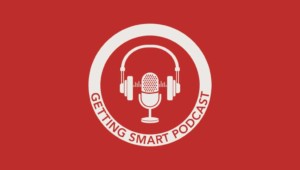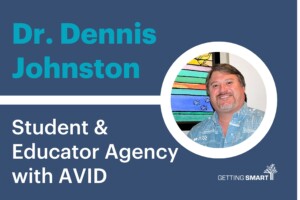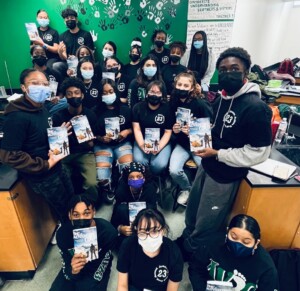How Teacher Beliefs Transform Student Outcomes: The Impact of Collective Educator Agency
Key Points
-
When educators speak the same instructional language, share beliefs in what it takes to ensure all students achieve, and hold high expectations of all students, academic success becomes far less predictable based on demographics — instead, success is possible for every student.
-
AVID, the non-profit organization that I work for, has developed a common language and structure for establishing equity and access, based on a framework of actions known to accelerate success for all students.

By: Dr. Dennis Johnston
Belief before behavior. This phrase has the power to transform classrooms, schools — and lives.
The importance of teachers’ beliefs has been demonstrated over many years of research. This work builds on the scholarship of psychologist Albert Bandura, who demonstrated that teams that believed in their potential to create change would end up with better results. In 2011, researcher Rachel Eells introduced the term collective teacher efficacy to the education space, and researcher John Hattie continues this work today, most notably in his book Visible Learning.
Collective teacher efficacy refers to the shared belief among a group of educators that they can influence student outcomes and increase achievement for all students. Research has demonstrated that this belief is one of the most influential factors in raising student achievement. As developed by Bandura, four major factors help in building self-efficacy. Applied to educators, these determinants are:
- Mastery experiences – Having successful past experiences will boost a teacher’s sense of efficacy, while failures will erode it. This factor is the most powerful source of efficacy.
- Vicarious experiences – Observing a peer teacher succeed at a task can strengthen beliefs in one’s own abilities: “If they can do it, so can I.”
- Verbal persuasion – This takes place through credible communication and feedback to guide the educator through a task or motivate them to make their best effort.
- Emotional and physiological states – A positive mood can boost one’s beliefs in self-efficacy, while anxiety can undermine it. Reducing stressful situations and lowering anxiety can help build self-efficacy.
The Framework for Transformation
To catalyze the movement from belief to behavior, AVID, the non-profit organization that I work for, has developed a common language and structure for establishing equity and access, based on a framework of actions known to accelerate success for all students.
We have found that once collective teacher efficacy is established, the next step is collective educator agency, where educators take action according to their shared beliefs.
In working with 8,000 schools in 47 states, we’ve learned that when educators believe in their ability to act and that their action will bring about the desired outcome, they become even more efficient and effective. With collective educator agency, they take intentional actions grounded in the belief that together, they can support all students in being academically successful. They are able to break down barriers, open access to essential learning experiences, and increase opportunity knowledge for all students.
This transformation begins with leaders at the site level and ideally expands to teachers and staff both within the school as well as across the system. For collective educator agency to take hold, schools don’t necessarily have to be organized into unified systems. However, beliefs, expectations, and actions among educators do need to be aligned first, with site and district leaders being integral to this happening on campus or within a district.
What Builds Collective Educator Agency?
Developing educators who believe in their own ability and are agentive is a necessary, but not sufficient condition for collective educator agency. Collective educator agency requires intentional actions by members of the collective, based on shared beliefs and trust that together, they can bring about measurable success for all students.
In AVID schools, these factors are positively activated through professional learning that is grounded in Bandura’s four significant factors, combined with site and district leaders intentionally building strong relationships with their staff and students. Schools are transformed as more and more teachers take intentional actions (demonstrating their collective educator agency) that are based on their shared beliefs and trust (reflecting their collective teacher efficacy).
Four Intentional Actions that Increase Success for Students
Our research shows that educators promote college and career readiness when they share key beliefs and take the following intentional actions:
- Insist on rigor – When teachers collectively believe that all learners should be taught at grade level or higher, they provide learning experiences that challenge and engage every student. These educators differentiate their instruction to meet the needs of their students, enabling learners to develop ownership of their studies through increasingly complex levels of understanding.
- Break down barriers – The shared belief that every student needs access to rigorous and relevant academic experiences motivates teachers to identify and work to eliminate structural and perceptual barriers that limit their students’ access to challenging learning opportunities. These teachers also reach out to families to build relationships that promote learning.
- Align the work – A collective belief that all students should be prepared to succeed motivates educators to collaborate when preparing lessons. They increasingly align policies and practices to reflect their shared vision that all students can succeed in college, career, and life.
- Advocate for students – When teachers share a collective belief that every student voice is as important as any other, they are motivated to advocate for their students. Educators will act to extend social, emotional, and academic support to students and challenge policies, practices, or beliefs that limit potential.
By choosing collectively to simplify the learning process and by aligning instructional practices, educators enable students to spend more of their time and energy learning from school, instead of learning how to do school. When educators speak the same instructional language, share beliefs in what it takes to ensure all students achieve, and hold high expectations of all students, academic success becomes far less predictable based on demographics — instead, success is possible for every student.
Collective Educator Agency Closes Achievement Gaps
The National Governors Association has stated, “The ‘achievement gap’ is a matter of race and class. Across the U.S., a gap in academic achievement persists between minority and economically disadvantaged students and their white counterparts. This is one of the most pressing education-policy challenges that states currently face.”
Yet when schools adopt AVID’s College and Career Readiness Framework and develop collective educator agency among staff, learning time increases significantly, opportunity and expectation gaps close, and gaps in achievement are minimized.
Schools implementing AVID immediately establish what is known as the AVID Site Team. This team of educators is a microcosm of the larger faculty such that members include teachers from the core content areas, counselors, the principal and other administrators. This “collective” is the catalyst for building collective educator agency in that each member attends professional learning that allows them to experience AVID before they are expected to teach AVID. In this way, educators first build the belief in their ability to use what they’ve learned and this leads to a higher likelihood that they actually will use it – again, belief before behavior.
When a community of educators shares a belief and acts intentionally to ensure all instruction is rigorous, instructional practices are aligned, and all students are supported, achievement gaps can be eliminated. For example, when looking at 2020 college enrollment rates between Hispanic / Latino, Black / African American, and White students, differences between these groups of AVID graduates is merely one percentage point, whereas, among students across the US overall, the gap is 10 times higher!

At AVID, we believe every student deserves a life full of possibility. Collective educator agency is an accelerant for student learning which then positively impacts student achievement.
We also know there are actionable steps that educators can take to put these beliefs into action. And the results demonstrate that greater success among all students is possible when we commit to igniting collective educator agency in every classroom, school, and district across the nation.
Dr. Dennis Johnston is the Senior Director & Chief Research Officer at AVID.







0 Comments
Leave a Comment
Your email address will not be published. All fields are required.